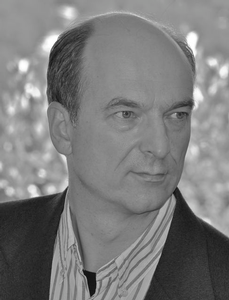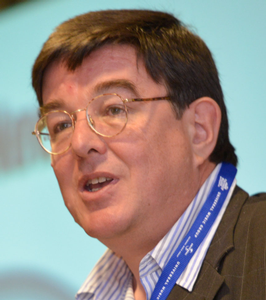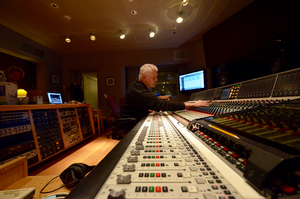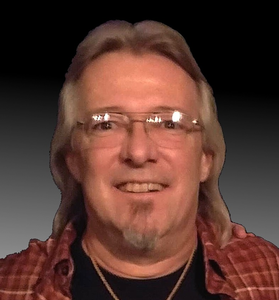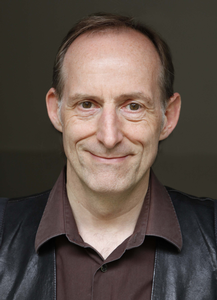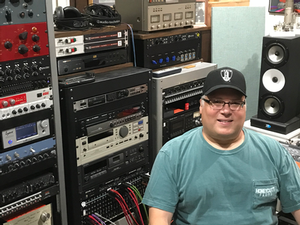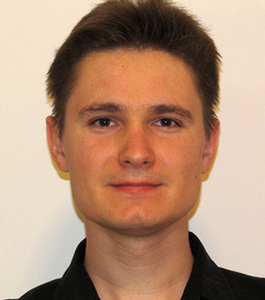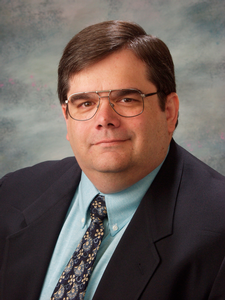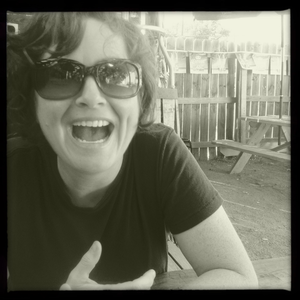AES New York 2018
Archiving and Restoration Track Event Details
Wednesday, October 17, 9:30 am — 10:30 am (1E13)
Archiving & Restoration: AR01 - Archiving and Best Practices for Modern Production Workflows
Chair:Konrad Strauss, Indiana University - Bloomington, IN, USA
Panelists:
Chuck Ainlay, METAlliance - Nashville, Tennessee, USA
Maureen Droney, The Recording Academy - Los Angeles, CA, USA
Bob Koszela, Iron Mountain Entertainment Services - Kennerdell, PA, USA
Michael Romanowski, Coast Mastering - Berkeley, CA, USA; The Tape Project
While technology has democratized music creation, the abundance of recording formats and the rate at which technology evolves present a dizzying array of choices to the artist. Additionally, many artists are working outside the music industry pipeline, reaching their audience directly via online portals. In effect, they are their own curators, preserving their artistic output.
The Producers and Engineers Wing of the Recording Academy recently revised their Recommendations for Delivery of Recorded Music Projects and released Recommendations for High-Resolution music production. They have also been a leader in the development of the DDEX recording metadata standard called RIN (Recording Information Notification). This panel will discuss technical best practices and the many challenges artists and producers face when creating and archiving music using modern technology.
Wednesday, October 17, 2:30 pm — 4:00 pm (1E08)
Historical: H01 - Life and Death of the 30th Street Studio
Presenter:Dan Mortensen, Dansound Inc. - Seattle, WA, USA; Friends of the 30th Street Studio - Seattle, WA, USA
Expanded technical look at entire history of the legendary Columbia Records recording studio in NYC, from its construction as a Presbyterian church in 1875, through its conversion to and use as a studio starting in 1948, until its sale in 1981 and demolition in 1982.
This talk will trace the history of the building itself and the evolution and changes in microphones, recording media and devices, studio monitoring, mixing consoles, outboard gear, and recording and studio staff. We will see some of the incredible talent that went through the studio, but there will not be time to do justice to the amazing array of people who worked there in all capacities and at one time or another, although the author is separately trying.
Wednesday, October 17, 2:30 pm — 3:30 pm (1E13)
Archiving & Restoration: AR02 - Help! I Have a Tape Machine
Moderator:Noah Simon, New York University - New York, NY, USA
Panelists:
John French, JRF Magnetic Sciences Inc - Greendell, NJ, USA
Chris Mara, Mara Machines - Nashville, TN, USA
Bob Shuster, Shuster Sound - Smithtown, NY USA
Dan Zellman, Zeltec Service Labs - New York, NY, USA; Zeltec Research & Development
Analog tape is increasingly becoming a vintage format. As this medium heads towards its twilight, it's crucial to share knowledge of how to maintain, evaluate, and source machines. This panel discussion will cover topics such as assessing the tape path, recognizing issues with motors, calibration techniques, maintaining electronics and mechanics, evaluation of heads and what to look for when purchasing a machine. The panel will consist of highly esteemed maintenance engineers with centuries of analog tape machine knowledge between them, including John French of JRF Magnetics, Bob Shuster, and Dan Zellman, well-known technicians in the New York area, moderated by Noah Simon from the Recorded Music program at New York University.
Wednesday, October 17, 3:45 pm — 4:45 pm (1E21)
Recording & Production: RP03 - Metadata – Getting Found, Getting Paid
Presenter:Paul Jessop, County Analytics Ltd - Dunstable, Bedfordshire, UK
Metadata used to be hurried notes on tape boxes. Now it is the way music is found, celebrated, and paid for. It may not be as sexy as high resolution or surround mixing—but it is arguably just as important. For each of us in music, it is part of our present and our future and it needs to be done right.
Paul Jessop has been working on standards in this area for decades and will present an overview of the practical steps that audio sector professionals need to take. He will cover ISRC, ISWC, ISNI, IPI, DDEX, RIN, and indeed other terms found in the left-over alphabet soup bowl.
Wednesday, October 17, 4:15 pm — 5:45 pm (1E06 (Immersive/PMC Rm))
Recording & Production: RP04 - The WoW Factor
Presenter:Jim Anderson, Anderson Audio NY - New York, NY, USA; Clive Davis Institute of Recorded Music, New York University - New York, NY, USA
What is Wow? Who has Wow? Where is Wow? Why is Wow needed? When can I get Wow? How can I get Wow?
Over one hundred years ago, audiences experienced “Wow” listening to a singer and comparing their sound with a recording. Observers at the time found that it was “almost impossible to tell the difference” between what was live sound and what was recorded. Sixty years ago, the transition from monaural sound to stereophonic brought “realism” into listener’s homes and today audiences can be immersed in sound. This talk will trace a history of how listeners have been educated and entertained to the latest sonic developments and said to themselves and each other: “Wow!”
Wednesday, October 17, 6:15 pm — 8:30 pm (Off-Site 1)
Historical: H02 - Ray Dolby and the Technical Innovations of Dolby Laboratories
Presenters:Ioan Allen, Dolby Laboratories, Inc. - San Francisco, CA, USA
Thomas Kodros, Dolby Laboratories, Inc. - New York, NY, USA
Dolby Screening Room
1350 Avenue of the Americas, Dolby 88 Screening Room
(corner 6th Ave. & W 55th St.)
This program traces over 50 years of audio developments from Ray Dolby and Dolby Laboratories and uses contemporaneous demonstration material for illustration. The content is primarily non-technical, and will conclude with a demonstration of the combination of Dolby Atmos and Dolby Vision—the ultimate cinema experience of 2018.
Special thanks for Meyer Sound for Providing additional sound equipment.
This event will be at the Dolby Theater. Program will start at 6:45 pm and end at 8:30. We must be completely out of the room by 9:00 pm.
Come early (5:30 pm) for finger food hors d’oeuvres and beer/wine reception.
This will be a ticketed event (available in the Dolby Demo room)
Thursday, October 18, 9:00 am — 10:00 am (1E10)
Archiving & Restoration: AR03 - Archive This! How Mastering Engineers Have Become Default Guardians of Audio Assets
Presenters:Michael Graves, Osiris Studio - Los Angeles, CA, USA
Andreas Meyer, Swan Studios NYC / Meyer Media LLC - New York City, NY, USA
Cheryl Pawelski, Omnivore Records
Mastering engineers rarely deliver a physical product for manufacturing anymore. Once the final product is released, we may not hear from the artist or label again ... until years later when the phone rings and we hear, "Remember that album we did back in 200X? Now we want to create high resolution masters, vinyl masters, and a few remixes."
Responsibility for long term preservation of recorded assets has shifted from the record label to the expectation that someone else (often, the mastering engineer!) will take care of it. This panel explores the issues in asset management, the decision to archive or not to archive, the legal ramifications, and whether there ought to be a new, subscription-based business model for long term storage of client data.
Thursday, October 18, 9:15 am — 10:15 am (1E07)
Recording & Production: RP07 - Circles of Confusion
Moderator:Thomas Lund, Genelec Oy - Iisalmi, Finland
Panelists:
Bob Ludwig, Gateway Mastering Studios, Inc. - Portland, ME, USA
Sean Olive, Harman International - Northridge, CA, USA
Floyd Toole, Acoustical consultant to Harman, ex. Harman VP Acoustical Engineering - Oak Park, CA, USA
30.000 year old cave paintings are among human beings' most impressive cultural heritage, while it's unknown how excellent composers sounded even 300 years ago. We recently acquired technical skills to record sound, but that asset is now degenerating because of cognitive limitations and the circles of confusion, addressed by this panel.
Without proper anchoring of spectral balance and level, drifting over time is inevitable in self-referenced systems, thereby putting legacy recordings at the risk of sounding dated for no good reason, or causing irreversible distortion to be added to pieces of art. The panel will discuss baseline listening requirements for in-room and headphone spectral balance and level that stand the test of time, putting our interests as a species above commercial trivialities.
Thursday, October 18, 10:15 am — 11:15 am (1E17 (Surround Rm))
Immersive & Spatial Audio: IS04 - STAAG Implementation Expanded: A Practical Demo of STAAG Mic Technique and its Use in Stereo, Surround, and Height-Channel Capture for Recording and Broadcast
Presenters:David Angell, Central Sound at Arizona PBS - Phoenix, AZ, USA
Jamie Tagg, Indiana University - Bloomington, IN, USA; Stagg Sound Services, LLC
While working on location, audio engineers are often challenged by insufficient monitoring, making choices which lead to timbral, wet/dry balance, and stereo image problems. This tutorial examines the use of STAAG (Stereo Technique for Augmented Ambience Gradient) and its established advantages for addressing stereo image, acoustic realism, and flexibility in the mix. While originally optimized for immersive headphone listening, this technique has proven advantageous when upscaling to stereo, surround, and even height-channel loudspeaker systems and stereo/surround broadcast streams. Also, this setup is advantageous when working on location and in live performance scenarios due to its compact arrangement and compatibility with a wide variety of microphones. This tutorial will feature physical configurations and playback of audio examples in a variety of formats.
Thursday, October 18, 1:45 pm — 2:45 pm (1E08)
Historical: H03 - Stanley Watkins, a Bell Labs Sound Pioneer
Presenter:Doug Slocum, Synthetic Sound Labs - Toms River, NJ, USA
Stanley Watkins was a British audio engineer who worked for Western Electric and Bell Labs for the duration of his career. A documentary is in progress about his work with the Warner Brothers launching talking pictures. In 1939 he dazzled audiences at the World's Fair presenting the early talking machine known as the VODER. This presentation will include a demonstration of one of the few remaining VODERs.
Thursday, October 18, 4:00 pm — 5:30 pm (1E12)
Education: ED02 - What’s Driving the International EDU/Pro Audio Education Boom?
Moderator:John Storyk, Walters-Storyk Design Group - Highland, NY, USA
Panelists:
Rob Jaczko, Berklee College of Music - Boston, MA, USA
Paul Lehrman, Tufts University - Medford, MA, USA
Dana Roun, Full Sail University - Orlando, FL, USA
Mary Simoni, Rensselaer Polytechnic Institute - Troy, New York, USA
Cyrille Taillandier, Drexel University - Philadelphia, PA, USA
Many global universities are making significant investments in faculty, real estate, and cutting-edge technology in support of professional audio production/teaching facilities. 2018 looms as a watershed year for new entries: Drexel University, Rensselaer Polytechnic Institute, Concordia College, ICESI U (Cali, Colombia), are just some of the institutions opening teaching complexes for audio in 2019. This panel of leading educators will explore the escalating commitment to pro audio education. Topics include: • What are the issues in designing for technical and creative training? • How do we “future-proof” our new facilities? • Where do today’s (and tomorrow’s) students end up working? • Engineering vs. liberal arts / Dedicated schools vs. traditional colleges: How do we incorporate intensive audio training into a more comprehensive curriculum—or should we?
Thursday, October 18, 5:15 pm — 5:45 pm (1E06 (Immersive/PMC Rm))
Audio for Cinema: AC04 - The 5th Element – How a Sci-Fi Classic Sounds with a New 3D Audio Mix
Presenter:Tom Ammermann, New Audio Technology GmbH - Hamburg, Germany
The 5th Element—it’s certainly a milestone in Sci-Fi film history. Recently it was completely overworked doing a completely new film scan in 4k and mixing the whole audio elements again in Dolby Atmos and Headphone Surround 3D. This version was released in Germany as UHD Blu-ray and offers a fantastic new adventure of this great production from Luc Besson. The session offers listening examples and inside information of the production.
Thursday, October 18, 6:15 pm — 8:30 pm (Off-Site 2)
Historical: H05 - Both Sides Now: Joni Mitchell at the Isle of Wight 1970
Presenter:Eliot Kissileff
Producer Eliot Kissileff discusses the restoration ordeal of creating the movie and soundtrack, filmed by Murray Lerner and recorded by Teo Macero and Stanley Tonkel.
Featuring concert footage as well as contemporaneous interviews at the festival with attendees as well as a 2003 interview Ms. Mitchell, the film will be released for the first time at the end of September. This will be the first New York showing.
This event will be at the Dolby Theater. Doors will be at 6:15 pm, program will start at 6:45 pm and end at 8:30. We must be completely out of the room by 9:00 pm.
No food or drink other than water allowed in theater.
This will be a ticketed event (available in the Dolby Demo room)
Friday, October 19, 9:00 am — 10:30 am (1E17 (Surround Rm))
Historical: H06 - The Commercialization of Stereophony, 1955–1960
Presenter:Thomas Fine, Tom Fine Audio Services - Brewster, NY, USA
In 1955, stereo reel to reel tapes and players came to market, representing the beginning of the record business's commercialization of stereophony. By late 1958, 60 years ago, most of the major companies were releasing stereo LPs.
Continuing on his previous presentation, "The Roots of Stereophony," Fine will detail the technologies, key people and software of the early commercialization of stereophonic sound recordings. The presentation will include rare audio examples, including excerpts from the first commercially available stereo LP, plus excerpts from the author's collection of stereo demonstration records and tapes.
Also under discussion will be the marketing techniques used to convince people to ditch their one-speaker listening system and embrace 2-channel stereophony.
Friday, October 19, 10:15 am — 11:15 am (1E08)
Immersive & Spatial Audio: IS11 - The Audio Edge: Ambient Computing, Artificial Intelligence and Machine Learning with Sound
Presenters:Sally Kellaway, Microsoft - Seattle, WA, USA
George Valavanis, Microsoft - Seattle, WA, USA
Audio professionals understand that sound is a powerful signal for capturing and conveying information about the world. From sound designers to composers, we use the communicative capacity of sound to tell stories. Advancements n Artificial Intelligence and Machine Learning are introducing new ways to process sound as data to better understand our environment and expand our awareness.
Presenting findings from Microsoft's Mixed Reality at Work development team, George Valavanis and Sally Kellaway discuss audio's role in our cloud-connected future. From ML data capture workflows to the Microsoft Azure and Dynamics 365 tools used to develop data insights, we'll uncover how audio will expand the way we interact with our world, define a new class of hardware technologies, and become the data stream of the future.
Friday, October 19, 11:15 am — 11:45 am (1E10)
Archiving & Restoration: AR04 - Recent Advances in Noise Reduction: From Multiband Gates to Machine Learning
Presenter:Alexey Lukin, iZotope, Inc. - Cambridge, MA, USA
Since 1940s single-band and multiband gates dominated the field of static noise reduction in audio signals. FFT processing enabled by digital computers has dramatically increased the number of bands but hasn’t gone far from the multiband gate concept. Recent advances in deep neural nets are able to break free from the multiband gate approach by learning to predict signal features. This talk by iZotope’s Principal DSP Engineer Alexey Lukin will describe company’s evolution of noise reduction algorithms and provide some insights on what the future may bring for the audio engineering community.
Friday, October 19, 11:45 am — 12:15 pm (1E10)
Archiving & Restoration: AR05 - An Overview of Optimizing Signal-to-Noise Ratio Primarily in Analog Audio Tape Recording
Presenter:Richard Hess, Richard L Hess (Audio Tape Restoration) - Aurora, ON, Canada
Optimizing signal-to-noise ratio in audio tape recordings has been part of the design process almost from the beginning and continued throughout the life of the medium. The first step was equalization to better optimize the placement of a typical program spectrum within the linear operating area of the tape. Basic equalization was used throughout the life of the medium, while specialty equalization curves were used for shorter periods of time. Next, a two-track-per-audio-channel approach, recording at two different levels and automatically switching between the two recordings on playback was introduced. A form of this process, without the automatic switching on playback, is still with us today in the "backup recording" mode in some digital field recorders. The two-track approach was quickly replaced by systems that compressed the audio signal in a predetermined way and then expanded the signal upon playback in a complementary manner. These compander systems provided a wider dynamic range without sacrificing half the available tracks. Later, equalization was used with some early digital recordings. Archive and music reissue engineers face the difficult challenge of maintaining aging equipment (some 50 years old) in order to properly replay the companded recordings. A software solution to this challenge is described.
 | This session is presented in association with the AES Technical Committee on Signal Processing |
Friday, October 19, 2:45 pm — 3:45 pm (1E15 +16 SE)
Special Event: SE12 - Studio Stories—Remastering Jackson Browne's “Running On Empty”
Moderator:Kevin Reeves, VP, Studio Operations North America - UNIVERSAL MUSIC GROUP - New York - Nashville - Los Angeles
Presenters:
Reuben Cohen
Danny Kortchmar, Legendary GRAMMY nominated guitarist, songwriter and producer (Jackson Browne, Don Henley, James Taylor)
Gavin Lurssen
Ron McMaster, Capitol Studios Mastering - Hollywood, CA, USA
This panel focuses on the recently re-mastered release of Jackson Browne’s iconic LP “Running On Empty" on vinyl, the relevance of working on historical recordings, and revamping the aural experience using and vintage and modern mastering techniques to satisfy the current consumer audio expectations for these recordings. The album was recorded and mixed by the late Greg Ladanyi on tour, live and on stage, or in locations such as backstage, on tour busses, and hotel rooms.
Friday, October 19, 3:00 pm — 4:00 pm (1E13)
Archiving & Restoration: AR06 - Preserving Classic Multi-Tracks (like Earth Wind & Fire's “September”) for Use in the Classroom
Presenters:John Krivit, Professional Audio Design - Hanover, MA, USA; Emerson College - Boston, MA, USA
George Massenburg, Schulich School of Music, McGill University - Montreal, Quebec, Canada; Centre for Interdisciplinary Research in Music Media and Technology (CIRMMT) - Montreal, Quebec, Canada
Eric Schwartz, Partner, Mitchell Silberberg & Knupp LLP, and Member, National Recording Preservation Board – Library of Congress
Toby Seay, Drexel University - Philadelphia, PA, USA
In the wake of the 2018 AES Archiving Conference, a demand was created to make available classic multi-track recordings for educational purposes. Addressed were well-founded concerns that archivists cannot keep up with quantities of decomposing magnetic tape being stored in less than ideal conditions. If tape owners could find opportunity to remonetize original multi-track tapes, they would have incentive to hire archivists, and worries about conservation would be allayed. In proposing an electronic library of classic multitrack master recordings distributed by the AES to educational institutions, the panel will present the pedagogical value of their use, discuss existing arrangements for archiving collections at colleges and unwind the legal and ethical concerns of record companies and copyright holders. Attendees can expect to hear multi-tracks of Earth Wind & Fire’s "September" presented by George Massenburg and David Bowie’s Young Americans as presented by Toby Seay.
Friday, October 19, 4:00 pm — 5:00 pm (1E15 +16 SE)
Archiving & Restoration: AR07 - Preserving the Archives of Major Recording Artists
Moderator:Jessica Thompson, Jessica Thompson Audio - Berkeley, CA, USA
Panelists:
Niko Bolas, The Surf Shack Studio - Ventura, CA USA; Germano Studio - NYC, NY USA
Brad Mindich, Founder/CEO Inveniem
Susan Rogers, Berklee College of Music - Boston, MA, USA
Steve Rosenthal, MARS ( MagicShop Archive and Restoration Studios - Brooklyn, NY, USA
Aretha Franklin, David Bowie, Lou Reed, Merle Haggard, Tom Petty - these past few years, we’ve lost too many major recording artists to list. They leave behind their legacy as artists and performers as well as vaults filled with recordings, demos, sketches, unfinished projects, documents, and more. This panel will address the challenges of dealing with the archives of major recording artists.
Susan Rogers (Berklee, Prince, Barenaked Ladies), Brad Mindich (CEO, Inveniem), engineer/producer Niko Bolas (Neil Young, LeAnn Rimes, The Mavericks), and engineer/producer/archivist Steve Rosenthal (MARS, Lou Reed, Blondie) will share their memories of working in the studio with major artists and discuss the formidable issues around archiving and preservation. They will speak to the technical challenges of identifying and digitizing decades of analog and digital formats, the legal obstacles, and the question of when and how to curate new releases from archival materials.
Friday, October 19, 4:30 pm — 5:45 pm (1E09)
Product Development: PD14 - Audio Source Separation—Recent Advancement, Applications, and Evaluation
Chair:Chungeun Kim, University of Surrey - Guildford, Surrey, UK; Sony Interactive Entertainment Europe - London, UK
Panelists:
Jon Francombe, BBC Research and Development - Salford, UK
Nima Mesgarani, Columbia University - New York, NY, USA
Bryan Pardo, Northwestern University - Evanston, IL, USA
Audio source separation is one of the signal processing techniques inspired by the humans' corresponding cognitive ability in auditory scene analysis. It has a wide range of applications including speech enhancement, sound event detection, and repurposing. Although initially it used to be only possible to separate the sources in very specific capturing configurations, only to a suboptimal level of quality, advanced signal processing techniques, particularly deep learning-related approaches, have both widened the applicability and enhanced the performance of source separation. In this workshop the recent advancement of source separation techniques in various use-cases will be discussed, along with the challenges that the research community is currently facing. Also, research activities on the quality aspects specific to source separation towards effective performance evaluation will be introduced.
 | This session is presented in association with the AES Technical Committee on Semantic Audio Analysis |
Saturday, October 20, 11:30 am — 12:00 pm (1E11)
Archiving & Restoration: AR08 - Austin City Limits Archive: Applying Software Development Methodologies to Audiovisual Archiving
Presenter:Amanda Moore, KLRU-TV Austin Public Television - Austin, TX, USA
Software development and audiovisual archiving are surprisingly similar in many ways. Specifications, file naming, hierarchies, relational materials, metadata, data management, discoverability, storage, use cases, strict standards, best practices, and 3rd party requirements are applicable to both fields and can be applied quite similarly in a lot of cases. Correspondingly, project management between the two fields isn’t much different. Using the Austin City Limits Archive as a case study, this discussion will cover how these two fields intersect, what methods can be shared and how software project management tools, such as Agile, can be applied successfully in tracking and managing an audiovisual archive project to completion.
